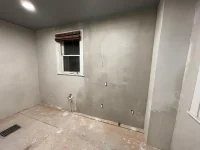You have reached the maximum number of views available on this site without registering.
You are using an out of date browser. It may not display this or other websites correctly.
You should upgrade or use an alternative browser.
You should upgrade or use an alternative browser.
Keeping tools/buckets clean ...
- Thread starter Bolthosue
- Start date
You have reached the maximum number of views available on this site without registering.
You have reached the maximum number of views available on this site without registering.
John j
Mono Don
You have reached the maximum number of views available on this site without registering.
Casper
Private Member
You have reached the maximum number of views available on this site without registering.
Casper
Private Member
You have reached the maximum number of views available on this site without registering.
Cockney
Well-Known Member
You have reached the maximum number of views available on this site without registering.
Casper
Private Member
You have reached the maximum number of views available on this site without registering.
Stevieo
Royal Spin Doctor
You have reached the maximum number of views available on this site without registering.
Casper
Private Member
You have reached the maximum number of views available on this site without registering.
Cockney
Well-Known Member
You have reached the maximum number of views available on this site without registering.
The Hobo
Well-Known Member
You have reached the maximum number of views available on this site without registering.
Casper
Private Member
You have reached the maximum number of views available on this site without registering.
Casper
Private Member
You have reached the maximum number of views available on this site without registering.
You have reached the maximum number of views available on this site without registering.
Cockney
Well-Known Member
You have reached the maximum number of views available on this site without registering.
You have reached the maximum number of views available on this site without registering.
Casper
Private Member
You have reached the maximum number of views available on this site without registering.
Lastlaff
Well-Known Member
You have reached the maximum number of views available on this site without registering.
You have reached the maximum number of views available on this site without registering.
Lastlaff
Well-Known Member
You have reached the maximum number of views available on this site without registering.
Casper
Private Member
You have reached the maximum number of views available on this site without registering.
Stevieo
Royal Spin Doctor
You have reached the maximum number of views available on this site without registering.
Lastlaff
Well-Known Member
You have reached the maximum number of views available on this site without registering.
You have reached the maximum number of views available on this site without registering.
Attachments
Lastlaff
Well-Known Member
You have reached the maximum number of views available on this site without registering.
You have reached the maximum number of views available on this site without registering.
You have reached the maximum number of views available on this site without registering.
You have reached the maximum number of views available on this site without registering.
Stevieo
Royal Spin Doctor
You have reached the maximum number of views available on this site without registering.
MakeItSmooth
Well-Known Member
You have reached the maximum number of views available on this site without registering.
The Hobo
Well-Known Member
You have reached the maximum number of views available on this site without registering.
Lastlaff
Well-Known Member
You have reached the maximum number of views available on this site without registering.
Attachments
You have reached the maximum number of views available on this site without registering.
Lastlaff
Well-Known Member
You have reached the maximum number of views available on this site without registering.




